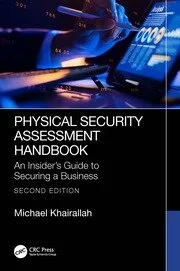Ensuring business continuity amid social unrest and demonstrations

The advent of the pandemic and societal unrest has businesses facing evolving threats like never before. In the wake of widespread demonstrations in the summer of 2020, many small business owners hired local private security contractors to provide armed guards to protect their businesses.
Especially today, risk is constantly evolving. Understanding risk and vulnerabilities and proactively planning to minimize these risks is crucial to business continuity and employee and community safety.
Throughout the better part of the past 70 years, the United States has seen numerous demonstrations stemming from social justice issues, anti & pro-war sentiments and the role of local police departments. While these demonstrations often occur in the form of a peaceful march or rally, some gatherings have seen violent outbreaks and rioting.
Washington DC, New York, Chicago, Los Angeles, Seattle, and Portland were cities that saw the most violent demonstrations per capita and the most sustained demonstration activity. Private security firms in these and other cities report having to turn potential clients away due to the high demand for services.
Demand has increased not only due to the desire for a crime deterrent amid a riot, but also due to decreased response times of many overwhelmed police departments. Given the police focus with demonstrations in major cities, local business establishments have reported up to an hour wait time before police are able to respond to emergency calls for assistance in dealing with opportunistic looting or vandalism stemming from the riots.
Some of the most prevalent risks in these areas to a business share three common trends:
-
PERSONNEL AND PROPERTY: Criminal activity - such as theft, looting, and arson - is more likely to occur after dark, particularly in urban environments where there is easier movement between areas. Response limitations on law enforcement personnel have the potential to exacerbate this situation.
-
INFRASTRUCTURE: The biggest infrastructure risks will likely be to private property and retail storefronts which are in or near protest areas and not necessarily a focus of law enforcement.
-
REPUTATIONAL: Recent trends indicate that reputational risk, with financial impact, can be caused when a business or its key leadership is associated with a political party. Some specific threats are social media calls for boycotts which have proven to be fairly effective (ex. Goodyear and Goya).
It is important for businesses to minimize presenting their facilities as a soft target for opportunistic criminal activity. Having a proactive plan in place to deter criminal activity will aid in protecting employees and assets.
Security planning considerations include:
Review your current crisis plan. Review current crisis planning documentation including closing procedures, evacuation procedures, communication protocols and consider conducting exercises or drills to ensure that all relevant personnel are fully aware of current policies for emergency preparedness and business continuity, especially as it relates to closing and evacuation procedures.
Establish and maintain communication. Ensure there is an established communications plan that provides positive communication processes for use during critical incidents. This will facilitate effective emergency notifications and responses among employees, executives and clients.
- A reliable means of information dissemination is critical during times of crises.
- Communication should occur at regular intervals to ensure a consistent flow of information is maintained.
- A formalized plan should include built in redundancies for primary and alternate communication methods if various digital and cellular systems are disrupted.
Conduct social media/local media/open source intelligence monitoring for location and brand threats. Opportunists, criminals, and influencers have continued to use social media to communicate, coordinate, and disseminate information. These individuals use simple words or phrases to create a “trending” topic that allow others the ease of access to current information ranging from demonstration locations to police responses.
Monitoring social media or online forums and acting upon credible threats and trends, will allow security details and site managers to adequately prepare to deter any threats. Companies or their security partners should subscribe to local, state, and federal governmental outreach programs and intelligence products such as OSAC, DSAC, State Intelligence Fusion Centers, etc., and meet with local, state, and federal law enforcement personnel for intelligence and information sharing. It is important to participate in Business Alliance Groups for intelligence and Information sharing.
Monitoring for the following will provide advanced warning and the time needed to mitigate the threats and risk to your people, facilities, assets, operations and reputation:
- Public sentiment,
- Brand, company, facility, locations, and personnel mentions,
- Known and evolving influencer hashtags,
- Protest announcements and/or updates,
- Trending social and/or racial injustice mentions and hashtags,
- Local news coverage should also be monitored to stay up to date on protests and any breaking events.
Prioritize historical and known threats. Businesses should consider ranking their locations in terms of risk regarding possible demonstrations, both in terms of facilities near probable demonstration hot-spots and potential risks faced should demonstrations occur. The highest-risk locations should consider preemptively securing their premises to minimize property damage – including the potential of boarding up windows and doors.
Contingency planning for unanticipated threats. Businesses should also consider including intelligence inputs into their crisis management plans and providing a feedback loop to ensure intelligence is disseminated timely and that analysts’ focus is evolving to the priorities of the moment which allows for more time to mitigate the threats.
Transportation routes should be reviewed, and contingency plans made with alternative routes, particularly if the primary route travels through areas likely to encounter civil unrest. This is especially the case when moving people or assets after dark.
Companies should assess the outside of their critical infrastructure to see if there are any unsecured objects that could be used by individuals for blockades or projectiles. These items should be removed and secured. If renting, work with the landlord to secure items or mitigate access to them.
Secure your resources. During times of crisis, security resources are likely to become constrained.
Securing resources prior to crisis events will be critical to success. When planning for coverage, a minimum of two security personnel should be stationed at a location where security will be needed.
Conduct security system tests. Confirm that all CCTV, security, fire and alarm systems are operational. Ensure process for either mechanical or electronic lockdown of perimeter doors is in place and tested. Companies should also consider retaining video footage for a minimum of 30 days.
Review and enforce the company’s social media policy regarding political commentary from employees. With high political tensions still brewing, personnel should be aware that any comment, for or against, may be used by the opposite site to bring unwanted attention to the individual and the company. As seen in other incidents, social media comments may be used to incite boycotts, targeted protests the company, harassment, property damage and even potential violence. Companies should consider forewarning that references to political statements in car bumper stickers, shirts, caps, backpacks, and other personal items may draw unwanted attention.
Plan for recovery. Make necessary arrangements in advance for repair and recovery resources to clean up and restore damaged sites and bring them back to full operation quickly.
Businesses in cities that have to-date seen the most robust protest activity should have a robust intelligence capability and crisis plan in place. Intelligence support during a time of unrest offers local operations and security managers access to a near real-time overview of the local climate and operating environment should tensions rapidly escalate. Ensuring a crisis plan is in place provides immense peace of mind to all businesses so that they can be ready for the unexpected.
Looking for a reprint of this article?
From high-res PDFs to custom plaques, order your copy today!







